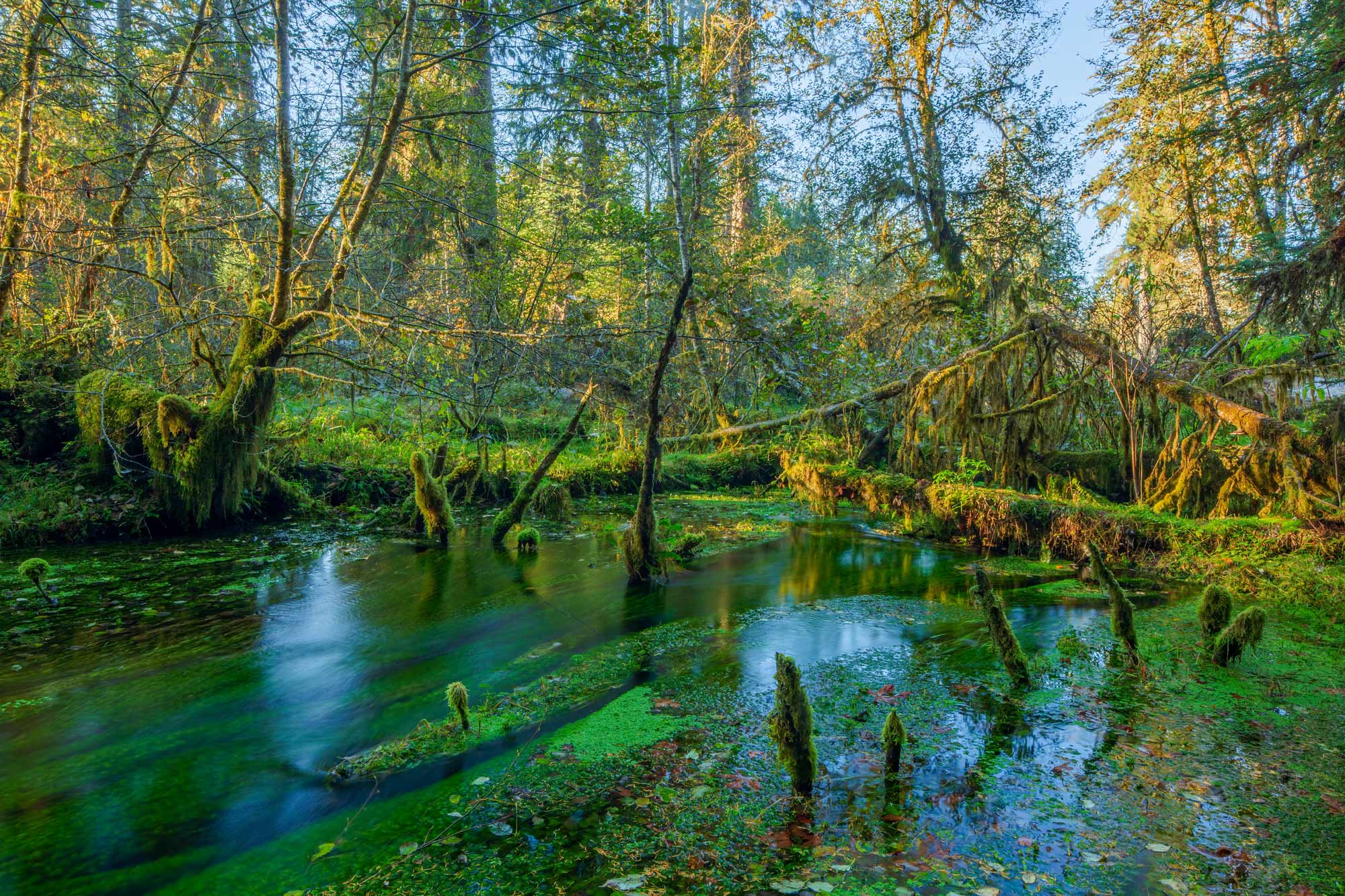

Anthony Stewart has spent many hours under the canopy of the Hoh Rain Forest, and “you would be amazed at the wetlands that are there,” he says. The doctoral student in the UW School of Environmental and Forest Sciences notes that skunk cabbage, black earth pits, muck, mud and saturated black soil signal the presence of what he calls cryptic wetlands. They are invisible to satellite imaging but obvious through new digital tools and up-close observation. Stewart’s research, which has drawn national attention, reveals an abundance of carbon-rich wetlands in the Pacific Northwest and Alaska.
Hiking off trail and sampling at 36 sites along the Hoh River watershed, Stewart and his team packed out 10- to 20-pound soil samples. After carbon-dating the soil, they discovered that some of the carbon was trapped over 20,000 years ago. “It was our ‘aha’ moment. We actually showed there were huge amounts of carbon stored in these forested wetlands that hadn’t been mapped before,” he says.
Conserving forested wetlands could help efforts to stabilize the climate. But the National Wetlands Inventory doesn’t include forests, and climate change and human development are causing more U.S. wetlands to disappear. After completing his degree in June, Stewart plans to join a lab at Cornell University. “I’m excited to continue this research,” he says. “These forested wetlands are way more valuable than we think.”